Đậu bắp & ớt nhồi chả cá (Vietnamese stuffed okra and peppers) is undoubtedly one of the essentials when it comes to Vietnamese street foods and side dishes. By combining the savory flavor of fish cake with the veggies’ gentle sweetness, the locals have created a one-of-a-kind dish that tastes just as good as it looks.
Whether you’re looking for a new snack to enjoy or want a delicious accompaniment to traditional Vietnamese delicacies, today’s recipe fits the bill perfectly.
So what are you waiting for? Let’s get right into the kitchen and whip up some mouth-watering stuffed peppers and okra.
A Closer Look at Đậu Bắp & Ớt Nhồi Chả Cá
The street food culture in Vietnam is impressive, with numerous vendors selling mouth-watering treats in every nook and cranny. Wandering on the streets of this country, you will come across carts filled with snacks, such as fish balls, fried tofu, egg rolls, pork balls, and, of course, stuffed okra and peppers.
While you can commonly find stuffed okra on the side of a bustling street, the version made from peppers is usually served in restaurants as an accompaniment. In particular, the Vietnamese love having stuffed peppers (as well as okra) with bún mắm, a bold-tasting noodle soup.
Overall, both of them taste incredible and are ideal choices for a delightful Vietnamese-style snack or as a side dish. In addition, peppers and okra are healthy and full of nutrients, meaning you can enjoy them without feeling guilty!
Gather These Tools to Prepare Đậu Bắp & Ớt Nhồi Chả Cá
First and foremost, you should get the following tools for Vietnamese stuffed okra and peppers. They are all essential kitchenware, so I believe you have already had them.
Ingredients Overview of Đậu Bắp & Ớt Nhồi Chả Cá
Peppers, okra, and fish paste are the base ingredients for today’s dish. Depending on whether you like spicy food or not, you can use different kinds of peppers.
Cooking Directions for Đậu Bắp & Ớt Nhồi Chả Cá
Here’s the detailed recipe that you’ve been eager to know. There are only 3 steps, and they are incredibly easy to follow.
Step 1: Prepare the Vegetables
Finely dice the onion and mince the garlic.
Make a cut on each okra lengthwise. Remove the seeds from the okra using your fingers or the handle of a serving spoon. Repeat these steps with the peppers.
Step 2: Season the Fish Paste
Season the fish paste with:
Mix well, then add half the onion and garlic to the mixture. Mix well to combine. Then, repeat this step with the rest of the onion and garlic.
Let the fish paste rest for 15 minutes.
Step 3: Stuff and Cook the Okra and Peppers
Use a teaspoon or the handle of a serving spoon to scoop the fish paste into the peppers and okra.
Pour about ⅖ cups of cooking oil into a heated pan. Once the oil is hot enough, fry the stuffed vegetables over medium-low heat until cooked on all sides. Remember to turn them so that they’re cooked evenly.
Transfer the peppers and okra onto a plate line with paper towels to remove the excess oil.
Enjoy these tasty Vietnamese treats with mayonnaise, chili sauce, or your favorite dips!
Handy Tricks for Preparing This Vietnamese Snack
For this final section, I’ll show you useful tips and tricks to ensure everything turns out flawlessly. Check them out!
Amaze Your Guests with Vietnamese Stuffed Okra and Peppers
Đậu bắp & ớt nhồi chả cá recipe (Vietnamese stuffed okra and peppers) is a simple yet addicting dish that brings together many unique aspects of Vietnamese cooking. The slight spiciness of horn peppers and the earthiness of okra go so well with the savory fish cakes that you can’t resist returning for more.
And that’s it! You’ve learned every step to make a classic Vietnamese street food right in your kitchen. Please let me know the result and whether you enjoy today’s recipe in the comment section. Besides, kindly give the post a good rating and share it with the people you know. It would be a huge help!
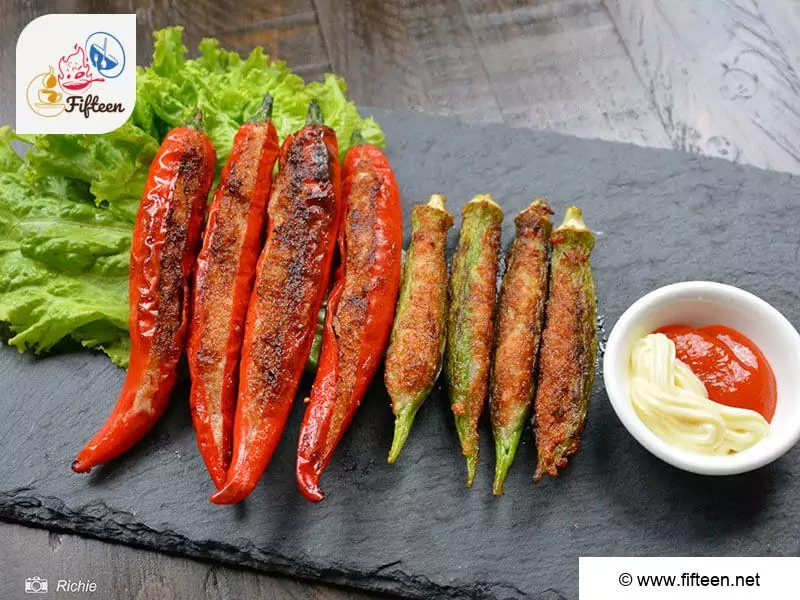
Đậu Bắp & Ớt Nhồi Chả Cá Recipe (Vietnamese Stuffed Okra and Peppers)
Equipment
- Pan
- Knife
- Chopping Board
- Spoon
Ingredients
- 3.5 ounces fish paste
- 4 goat horn peppers
- 4 okra
- 0.5 onion
- 0.35 ounces garlic
- 1 teaspoon sugar
- 1 teaspoon soup powder
- 1 teaspoon pepper
- Cooking oil
Instructions
- Finely dice the onion and mince the garlic. Make a cut on each okra lengthwise. Remove the seeds from the okra using your fingers or the handle of a serving spoon.Repeat the above steps with the peppers.
- Season the fish paste with pepper, sugar, cooking oil, and soup powder. Mix well. Add half the onion and garlic to the mixture. Mix well to combine. Repeat this step with the rest of the onion and garlic. Let the fish paste rest for 15 minutes.
- Use a teaspoon or the handle of a serving spoon to scoop the fish paste into the peppers and okra.
- Pour about ⅖ cups of cooking oil into a heated pan. Once the oil is hot enough, fry the stuffed vegetables over medium-low heat until cooked on all sides. Remember to turn them so that they're cooked evenly.
- Transfer the peppers and okra onto a plate line with paper towels to remove the excess oil. Enjoy!
Video
Notes
- The total time is based on 2 servings (4 okra and 4 peppers).
- The oil doesn’t need to be smoking hot! If it gets too hot, it will splatter once you add the vegetables.
- Keep the cooking temperature at medium-low. Increasing the heat to high will also cause oil spattering.
- If you want the carrots and okra to be extra crispy, try coating them with tempura flour.
- You can freely adjust the seasonings to your liking.


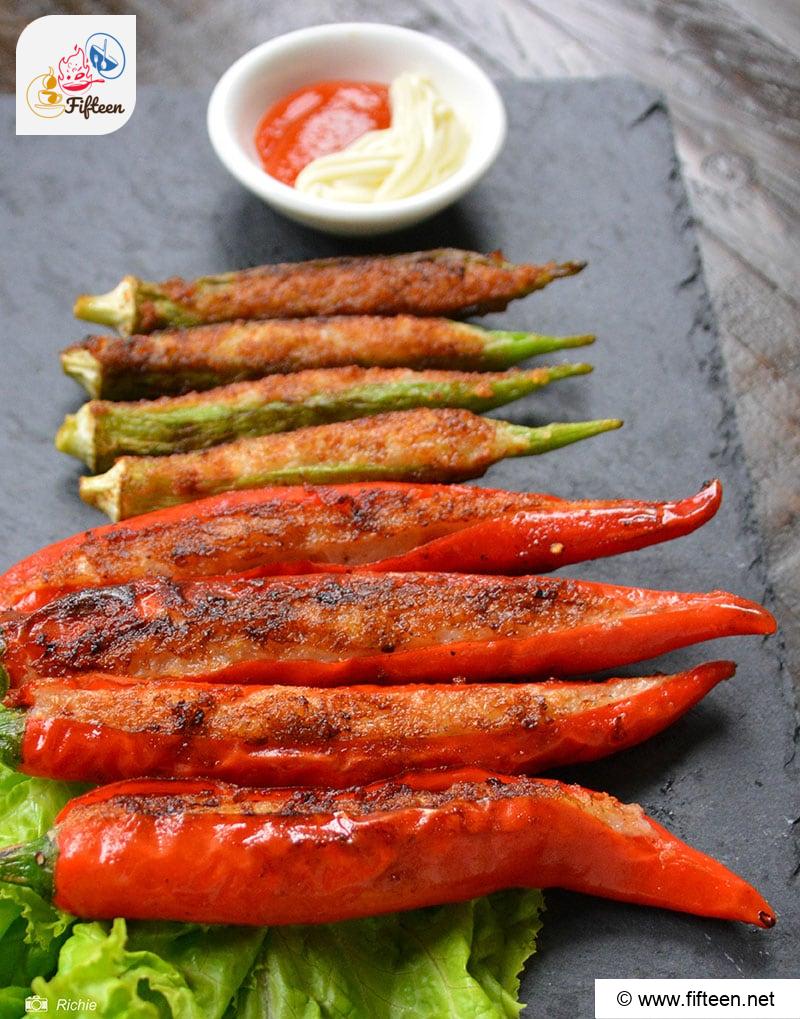
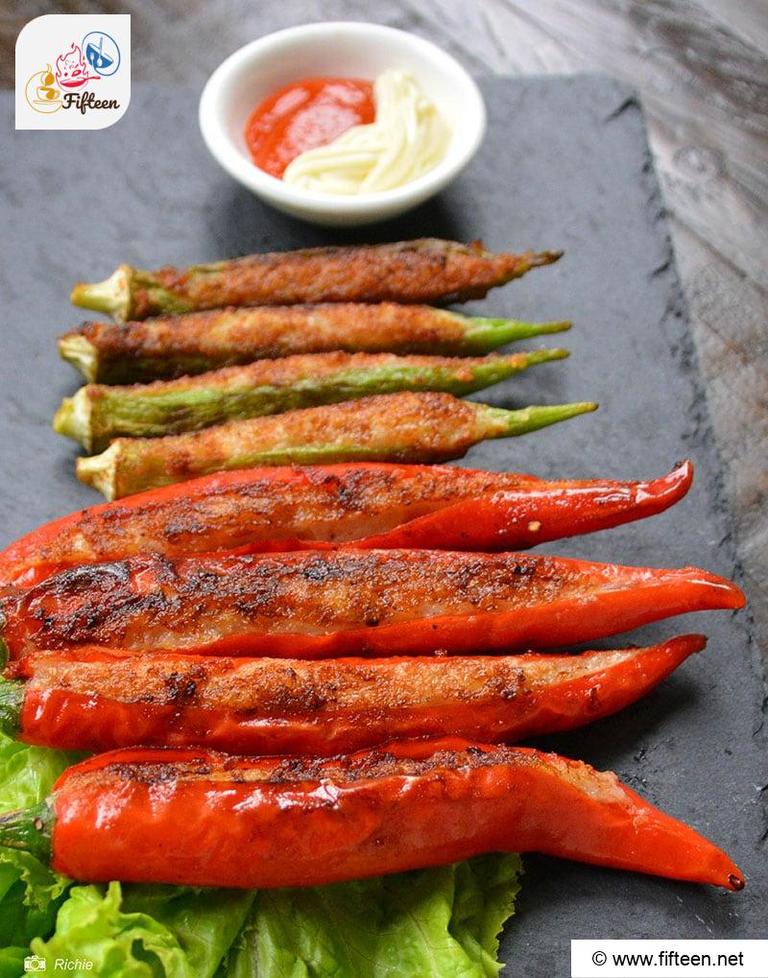
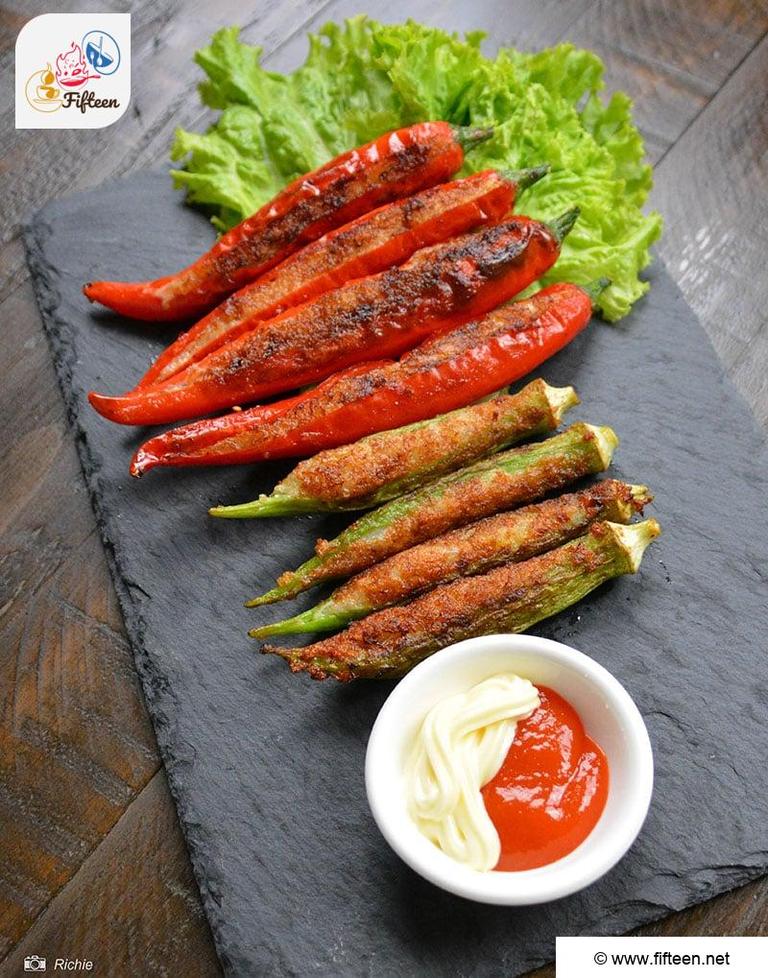
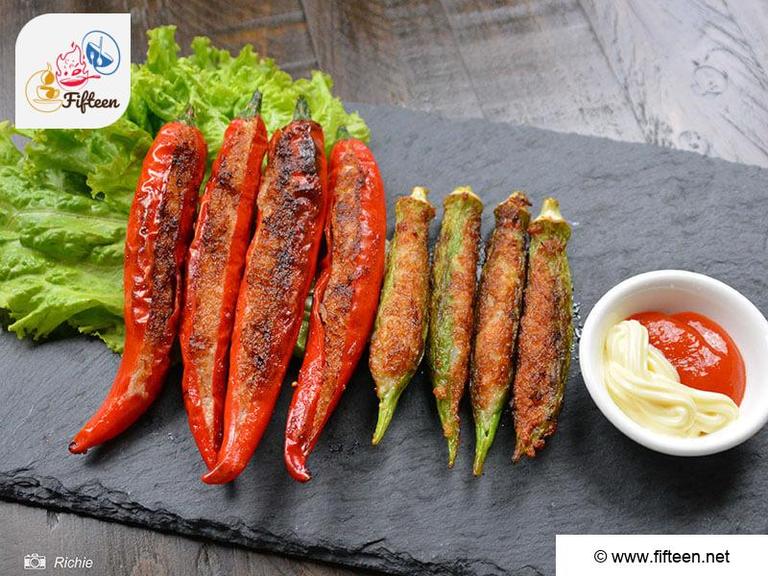
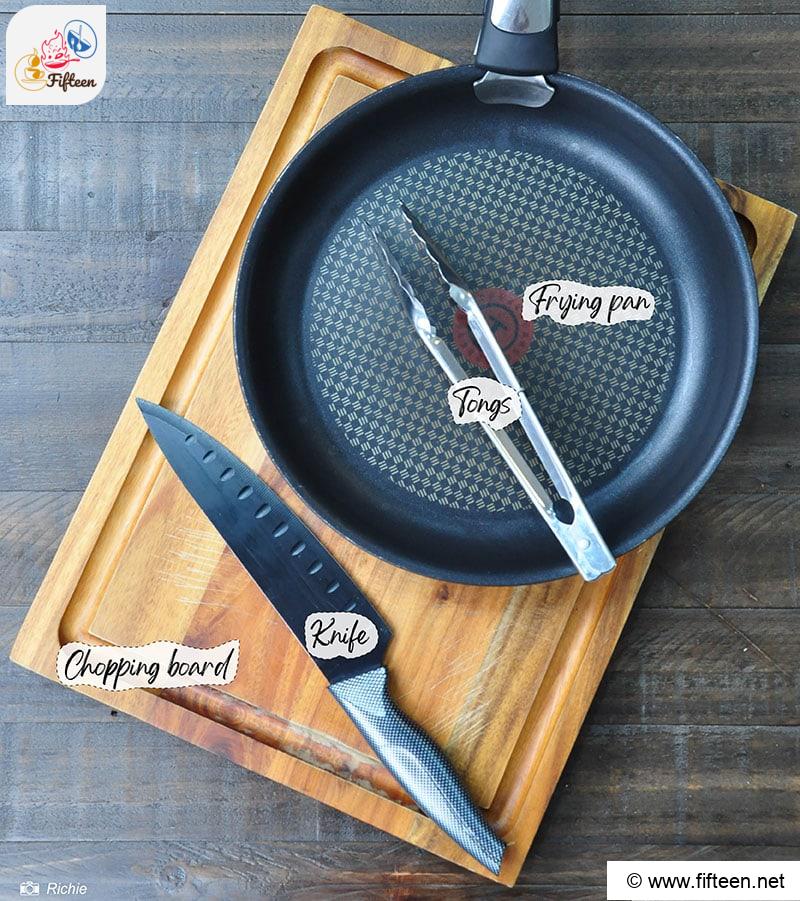
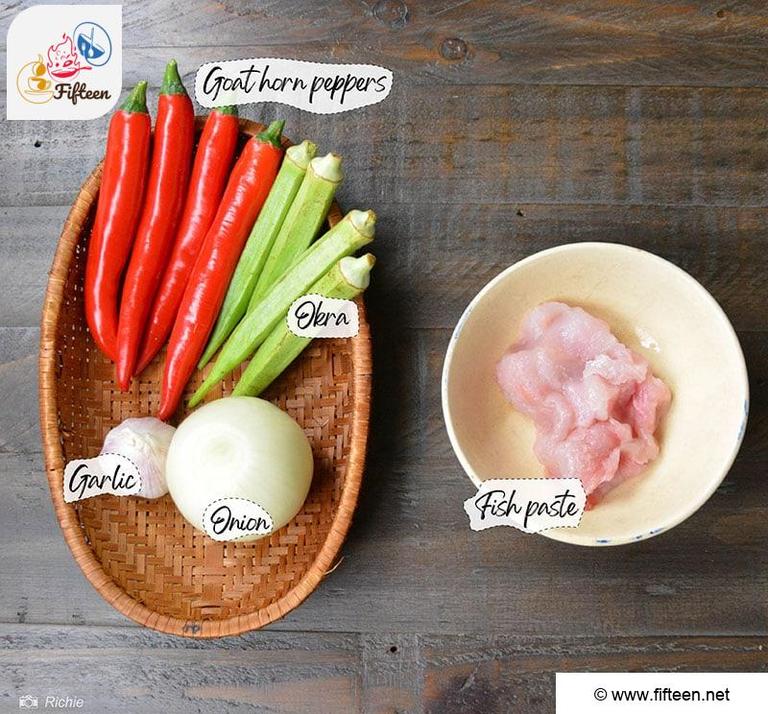
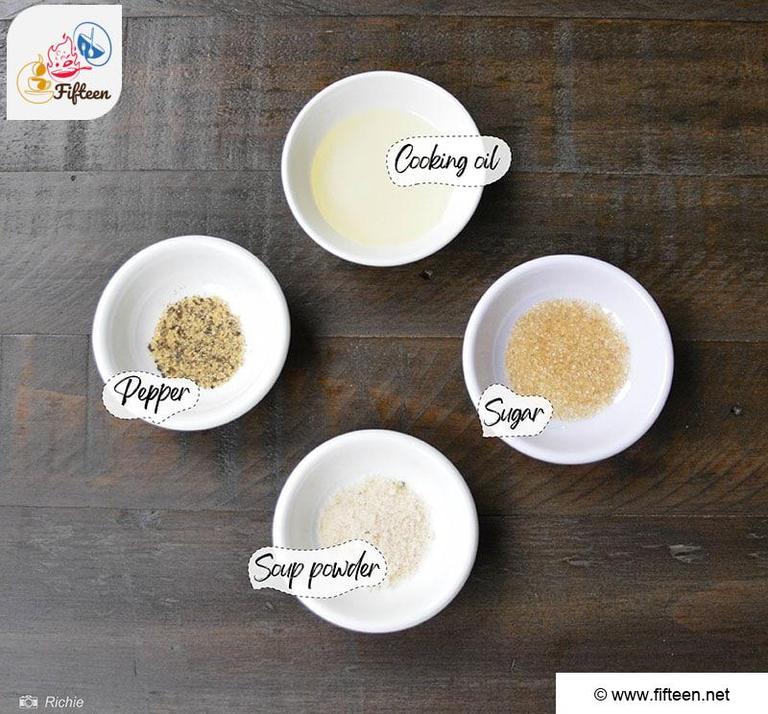
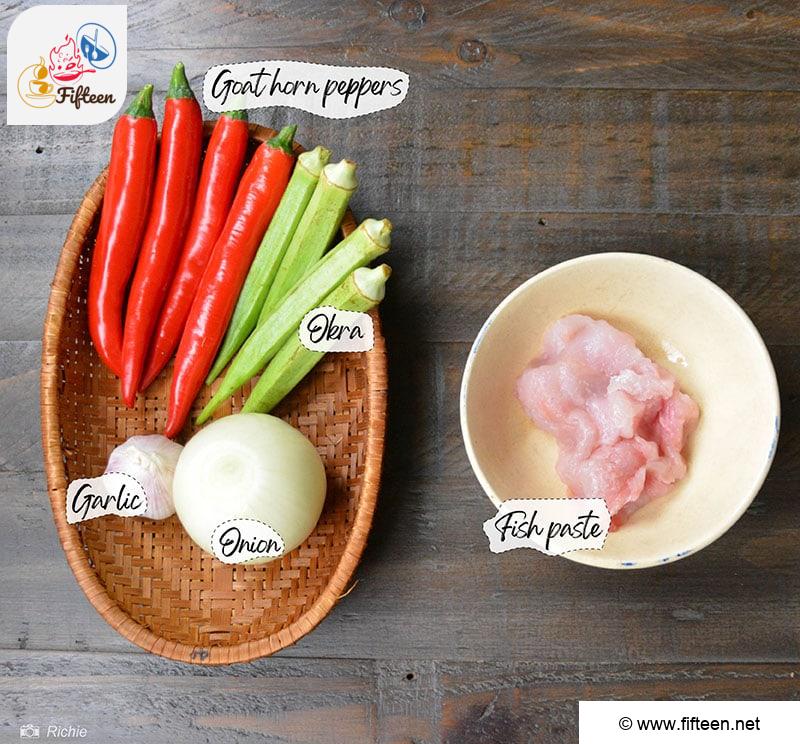
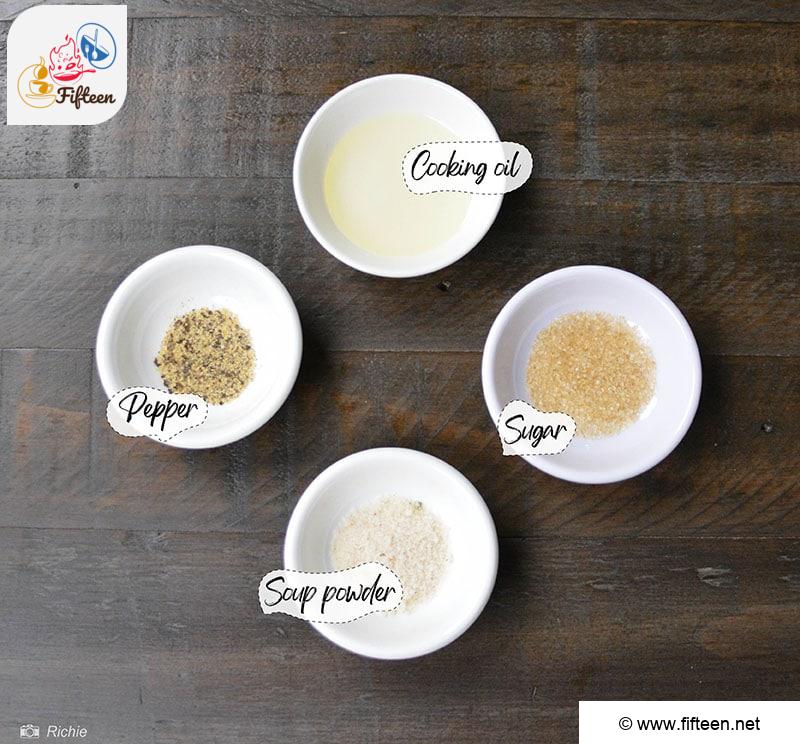
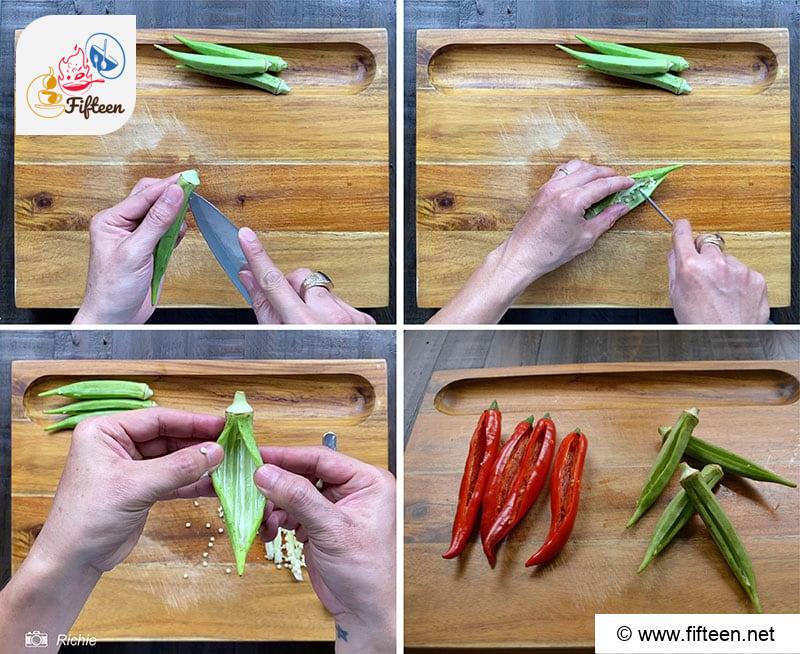
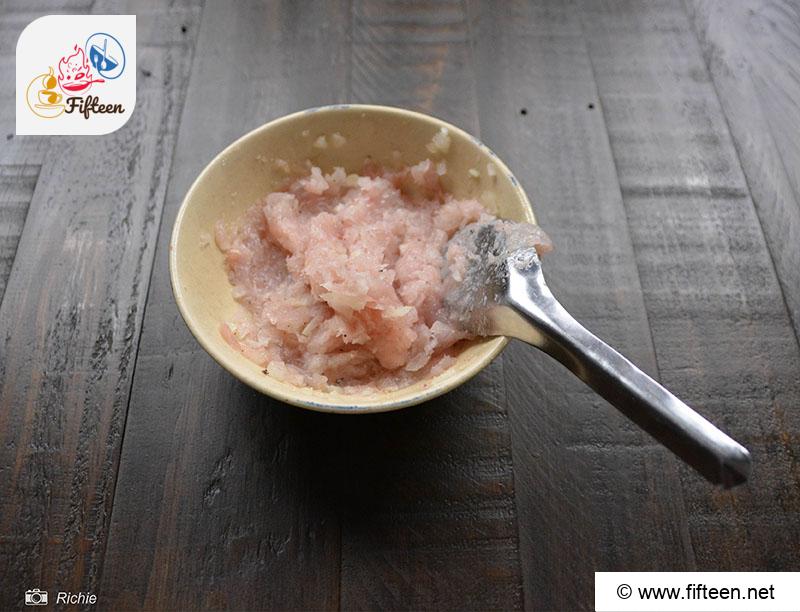
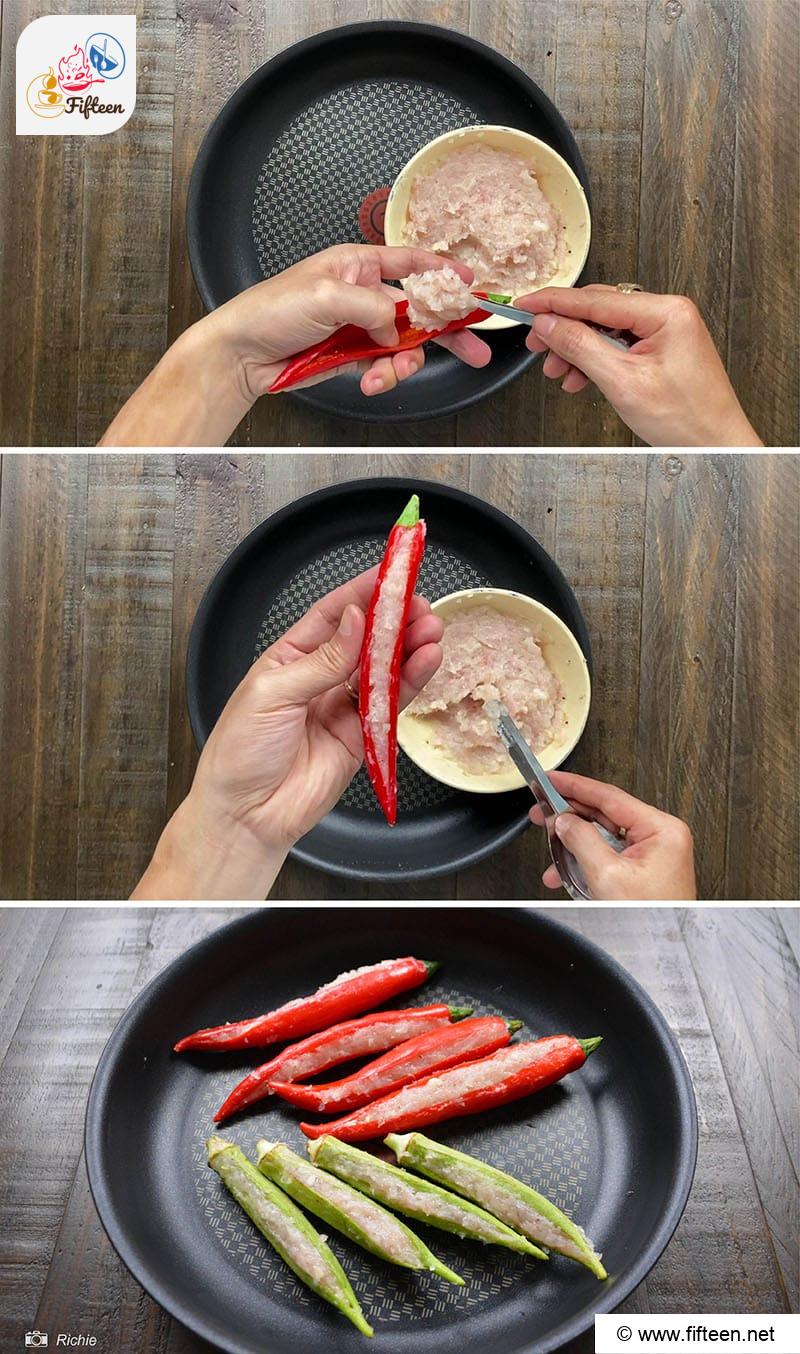
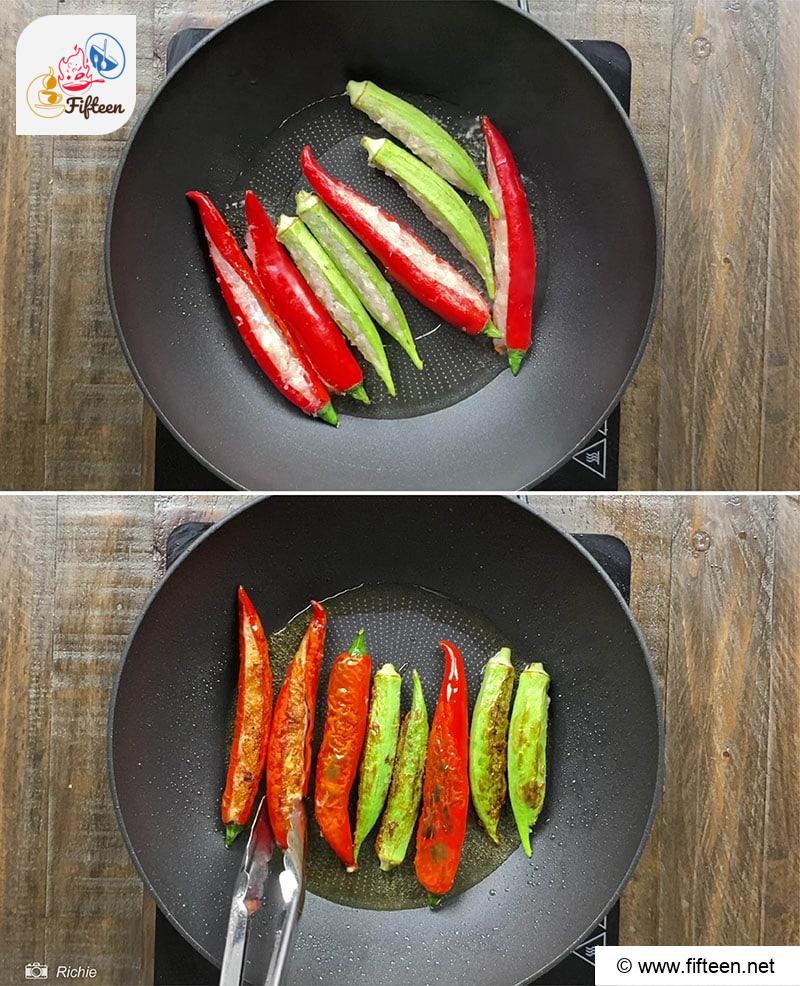
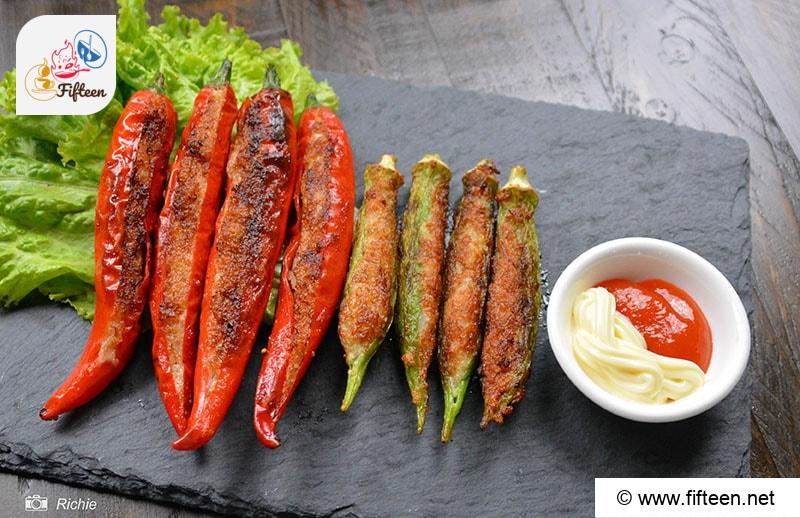
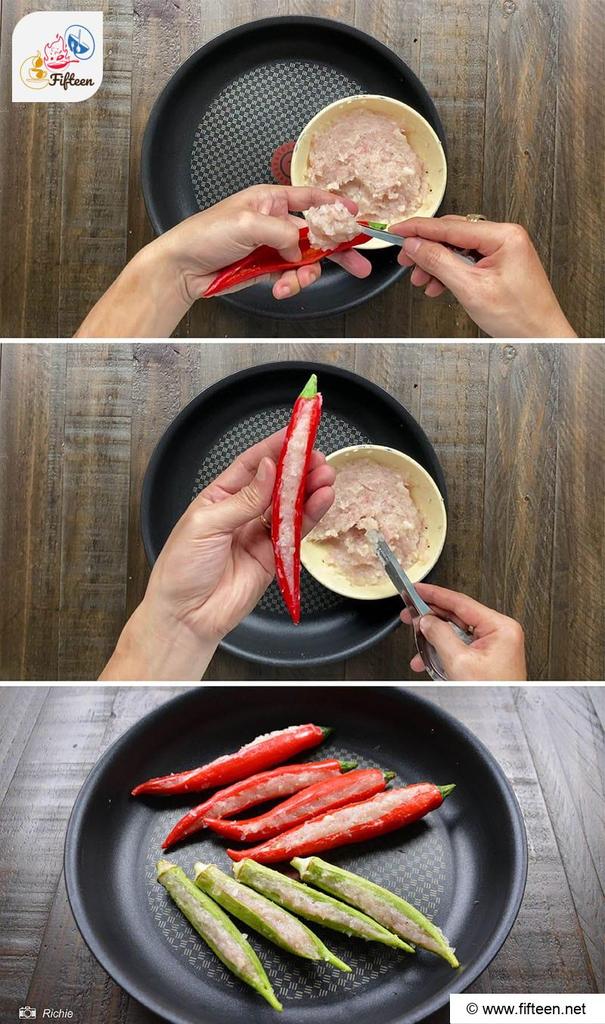
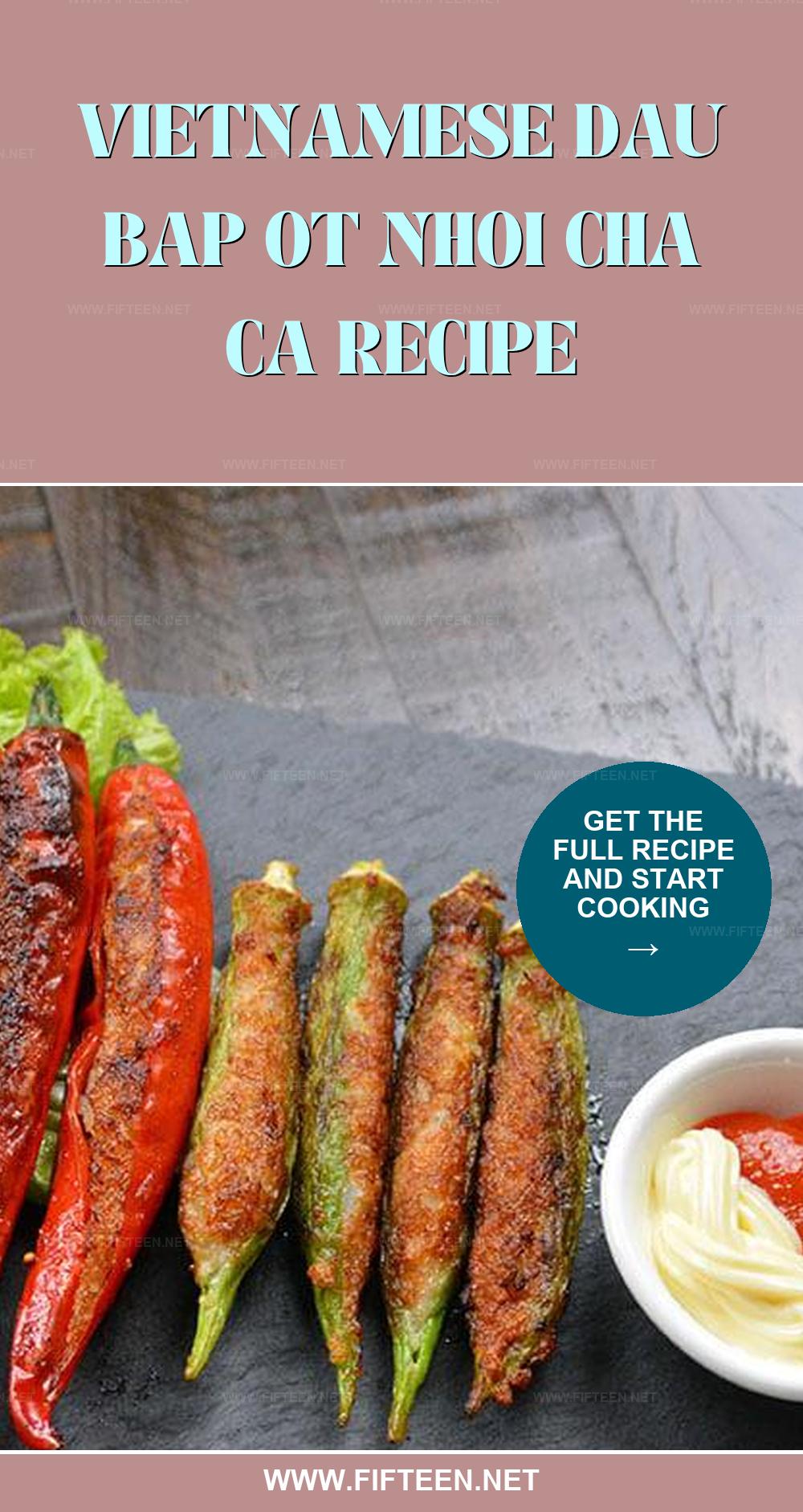
Richie
Content Writer
Expertise
Home Cooking, Meal Planning, Food Styling, Food Photography, Cooking-video Maker, Beverage Evaluation Expert
Education
Saigon Culinary Arts Centre, Ho Chi Minh City, Vietnam
Vietnam Australia Vocational School (VAAC), Hanoi, Vietnam
Richie, based in Ho Chi Minh City, Vietnam, is a dynamic Content Writer with a talent for capturing the essence of culinary art.
Richie specializes in creating visually appealing and tasty content, offering a new angle on Vietnamese and other culinary traditions. With a background in graphic design and a love for food styling and photography, he expertly combines beauty with food narratives, encouraging his audience to discover the culinary world through his imaginative perspective.